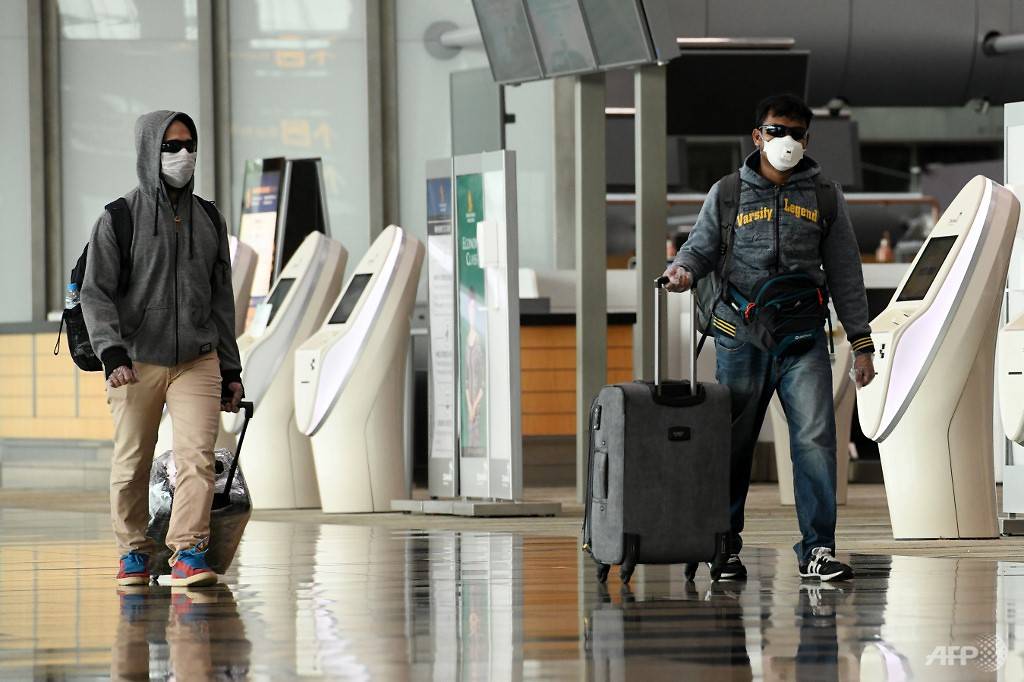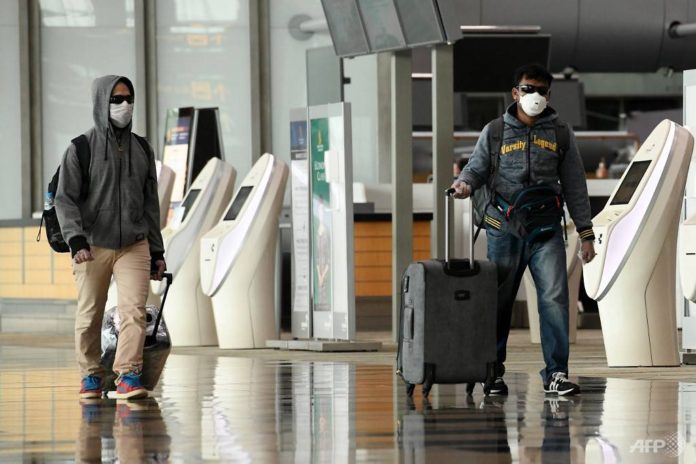SINGAPORE: After getting battered this year by COVID-19 travel restrictions, experts say the commercial aviation sector could look very different as it tries to build a post-pandemic future.
“The global airline industry is facing an unprecedented crisis and airlines are in survival mode. Many airlines will not have the financial means to survive an indefinite shutdown that, for many, already exceeds a half-year,” International Air Transport Association’s (IATA) Asia Pacific corporate communications assistant director Albert Tjoeng told CNA.
“The airline industry is facing an US$84 billion (S$114 billion) net loss this year and we are not expecting travel demand globally to recover to 2019 levels until 2024.”
National carrier Singapore Airlines reported a record S$1.1 billion loss for the quarter ending Jun 30 while Transport Minister Ong Ye Kung noted in Parliament that Changi Airport is serving just 1.5 per cent of its usual passenger volume.
Describing the revival of the Changi air hub as a “top national priority” for his ministry, Mr Ong spelled out a few ways in which air travel could safely resume.
These include the establishment of travel bubbles with countries and regimes deemed safe, as well as a “rigorous testing regime” in place of a two-week isolation period for travellers.
READ: Air travel bubbles, more green lanes part of plans for Singapore to ‘revive’ Changi Air Hub amid COVID-19: Ong Ye Kung
“Imposing quarantine on arriving passengers has the same impact as closing the border,” said Mr Tjoeng.
IATA has called for universal, systematic testing for all travellers before departure as a way to reverse the fortunes of the ailing aviation sector.
“Health screening before travel is essential. As testing technologies advance in speed, accuracy and scalability, we could see it playing an important role in future travel,” said Mr Tjoeng.
However, Singapore Management University transport analyst Terence Fan cautioned that such testing is not foolproof, noting that those in the early stages of the infection might show false negatives when tested.
Testing should be coupled with other measures such as contact tracing, said Mr Tjoeng, while Associate Professor Fan suggested requiring tourists stick to a strict itinerary when travelling to another country, as with package tours.
READ: COVID-19: Rigorous testing could help revive travel but challenges remain, say experts
RECOVERY AND THE NEW NORMAL
Even once the coronavirus situation settles, the new normal for air travel could still mean having your temperature taken and having to wear a mask while onboard flights, said Professor Jochen Wirtz, vice dean of graduate studies at the National University of Singapore Business School.
He expects travellers will adjust to such demands, just as they got used to the additional security measures that were imposed after the Sep 11 terror attacks 19 years ago, such as having to remove shoes.
“I don’t think this will be a deal breaker for travel, it will then slowly come back to normal just like after 9/11,” he said.
READ: Commentary: Want to travel again? It’s not sitting in a plane you should worry about
Associate Professor Fan however noted that while there was a dip in air travel after Sep 11, the impact of COVID-19 on aviation has been much worse.
Major economies such as the United States and Britain are still grappling with the disease, and this will impact the number of travellers into Singapore from such locations, he said.
“I think that’s a major problem. Yes, we’re going to have a new normal, but this new normal isn’t as smooth,” he said, adding this is likely to continue until an effective vaccine is developed and mass produced.
Pointing to IATA’s prediction of a full recovery only in 2024, Assoc Prof Fan said there was a “highly variable trajectory” for airlines to recover.
“I think people are just guessing and moving goalposts, but based on how China recovers, the goalposts can move both ways,” he said, referring to a pickup in the sector should Singapore see an influx of Chinese tourists in the future.
Airlines will have to restructure in the wake of COVID-19’s impact on revenue, said Assoc Prof Fan, with mergers, acquisitions and bankruptcy proceedings likely possibilities for carriers unable to stay afloat during the pandemic.
He pointed to how a number of major US airlines did so following the decrease in demand after Sep 11, and noted the current crisis was much worse.
Governments however may be unwilling to consider selling off national carriers to third parties, said Assoc Prof Fan.
“I think a lot of airlines definitely have to have a restructuring in terms of debt or maybe bankruptcy proceeding,” he added.
“But in terms of the merger and acquisition options, it depends on the respective government. And it’s not clear they are, at this point, open to that.
No airline will come out of the current situation unscathed, said Mr Shukor Yusof, head of aviation consultancy Endau Analytics.
“Airlines that are best capitalised, well managed and with a clear strategy beyond 2025 will benefit most,” he added.

Passengers arrive at Singapore Changi Airport on Jun 8, 2020. (File photo: AFP/Roslan Rahman)
TERMINAL 5 AND THE CHANGI AIR HUB
Plans to build a fifth terminal for Changi Airport have been put on hold for two years amid uncertainty over the impact of COVID-19.
Scheduled to be operational sometime in the 2030s, Terminal 5 – which would have been part of the sprawling 1,080ha Changi East development – was expected to allow the airport to handle an additional 50 million passengers per year.
Plans for Terminal 5 should proceed despite the current downturn, said Mr Shukor.
He expects air passenger traffic at Changi to increase beyond 100 million passengers per year beyond 2030, up from the 85 million passengers per year it is currently able to handle.
“However, costs must come down and the size of the project reevaluated to be more in line with growth expectations,” said Mr Shukor.
READ: Reviving Singapore’s air hub safely is transport ministry’s ‘top and immediate priority’
Assoc Prof Fan noted there was a need to increase Changi Airport’s passenger capacity should there be a rush of travellers from countries such as China, which has largely brought the outbreak under control after it began in Wuhan late last year.
Chinese tourists are the largest market for travel into Singapore, making up about 20 per cent of all visitors to the country prior to the COVID-19 crisis.
He cautioned however that there should be some flexibility with regards to the terminal’s development.
“When you invest in big infrastructure (projects), you need to be flexible, because there’re so many uncertainties, so many things that could happen that you just don’t know,” said Associate Professor Fan.
SIA’s war chest of funds means Singapore could be well-placed to maintain its air hub status, said independent aviation analyst Brandon Sobie.
He anticipates other regional hubs may see a decline in stature as the airlines based there may downsize or even go under.
The recovery of Singapore’s air hub may even be sooner than expected, said Mr Shukor.
“Singapore has shown it is quick to adapt and nimble and this will help in a quick recovery, once the health crisis is completely under control. It would well be before 2024, depending on how 2021 manifests itself,” he said.
“For 2020, it’s a washout year.”
The CNA Leadership Summit 2020: Navigating the Post-Pandemic World will discuss through a series of TV programmes and webinars how businesses and organisations have reacted to the pandemic and applied innovative practices.
More details are available at: cna.asia/leadership-summit.





